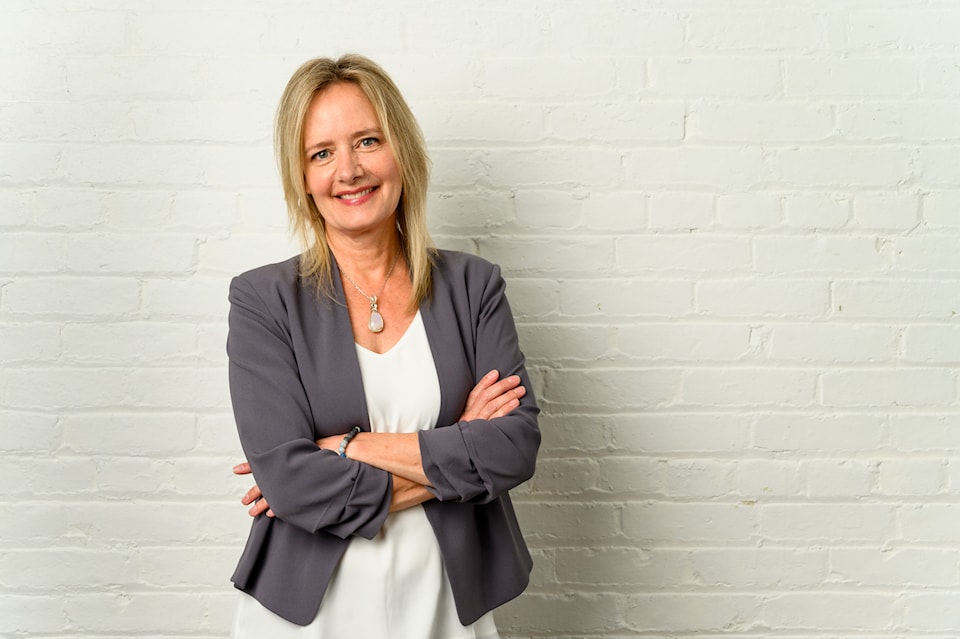Suzanne Zaccour, director of legal affairs for the National Association of Women and the Law, says women with higher levels of education might still be paid less and may still undergo obstacles such as domestic violence.
Friday is International Day of Education, established by the United Nations in 2018 and highlights the important role of education in inclusivity. But when it comes to gender equality, education isn’t enough to address all issues.
“What are women’s rights outside of education, such as do they have a right to universal basic income?" Zaccour asked. "Do they have a right to paid leave when they experience domestic violence? Do they have the right to a justice system that is fair and that is responsive to their needs?
“I think it’s really important to look at all the institutions in society. Education is kind of one of them, but also the justice system, the laws, the policies, the programs,” she said.
Although women are closing the education gap with men, a global study of gender equality from the University of Vermont shows these advances are failing to bring equal access to quality jobs and government representation.
Belinda Clemmensen, founder of the Women’s Leadership Initiative in Toronto, said this access to education is crucial which Jan. 24 advocates for, but it is not enough to achieve gender equality.
“A lot of the clients that we work with are in traditionally male-dominated sectors, like energy or natural resources, so now we have greater access for women to be in those workplaces, but they are still having a very different and very gendered workplace experience. We have to be able to not only have access to that but also to start to shift culture,” Clemmensen said.
“Professions like engineering or geology or sort of technical services, where you then often end up leaving that education system and going into what has traditionally been a male-dominated workplace, they’re face-to-face with the cultural challenges and then we see this big drop-off,” she said.
The OECD 2024 reported its ranking of countries for full-time employees with Canada having the seventh worst gender pay gap with racialized women or women with disabilities facing a worse gender pay gap according to the Canadian Women’s Foundation.
“We’ve got women who’ve got the education. They don’t stay in those careers necessarily at the same numbers because of that cultural barrier. Things like discrimination, sexual harassment, microaggressions, career paths that are either unclear or that are blocked in various ways that are gendered, those kinds of factors,” Clemmensen said.
She said from an individual level, women can equip themselves with the knowledge as to how their gender impacts the field they are getting into so they can develop the vocabulary to move towards equality and have those conversations with those who may disagree.
“I started to have this realization that the cast of characters in a leadership development space were the exact same cast of characters that a leadership development space that was there over my entire career, meaning that I started idealistic in my 20s,” Clemmensen said.

“Here I was approaching 50 and the majority of leaders in the room were still male, white and middle-aged,” she said.
In the Women’s Leadership Initiative, Clemmensen works to support getting more women into leadership roles, to be successful when they get there and to lead away from the role modelled by a more patriarchal, hierarchical kind of leadership style over the past.
Meghan Doherty, co-director of policy and advocacy for Action Canada for Sexual Health and Rights, said sexuality education is one of the most effective interventions for preventing gender-based violence and looks at addressing healthy relationships, power dynamics and harmful gender norms.
“Provinces across the country can do better in delivering these programs more consistently, without stigma, without judgment and really using these programs as a way of supporting young people to have healthy relationships, to fulfill their potential, to feel valued for who they are and to really challenge these underlying harmful gender norms and gender stereotypes that contribute to the gender equality in all aspects of our lives,” Doherty said.
She said all parts of society interact with each other, so when it comes to education, labour rights and the quality of work for teachers also need to be discussed with a large portion of teachers being women.
“Making sure that we have good working conditions for teachers, that they are supported not only through the labour protections but that schools are creating an environment, making sure that people are being paid an adequate wage that they are also protected from discrimination,” Doherty said.
She said ensuring everyone can have access to health care is also crucial in women being able to realize their potential through education and in ensuring menstrual products are easily available as many girls who are on their period won’t go to school.




